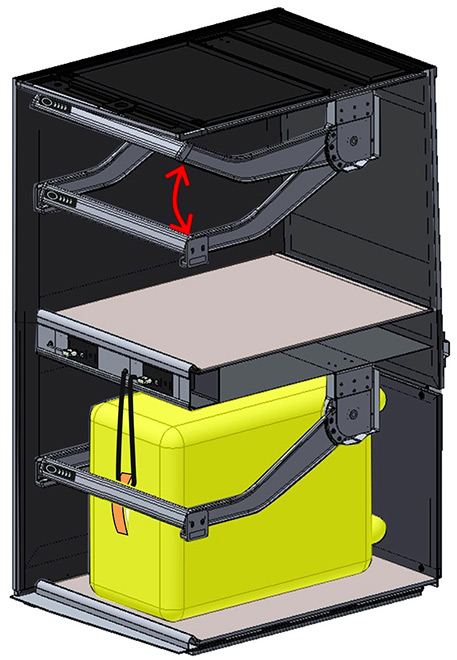How to board Shinkansen with oversize baggage
A fact we tend to forget about is that there are restrictions on traveling with oversize baggage on JR (Japan Railway) trains and especially on the Shinkansen, the Japanese high-speed train. These rules target the biggest luggage, which should not exceed the following limits:
- The total linear dimensions (length + width + height) should not exceed 250 cm or 98,42 inches, and the length should be under 200 cm (78,74 in);
- The maximum weight per bag is 30 kg;
- Each traveler can have up to two baggage (aside carry-on luggage).
These limitations reflect the current regulations for checked baggage implemented by airlines, and generally don’t create any problem once in Japan. Until recently JR staff usually didn’t pay attention to the number or the size of luggage when boarding the train. This tends to change, however, as touristic frequentation in Japan has dramatically increased. Japanese customers, who are used to travel light, must now share space with foreign tourists carrying around big pieces of luggage. The increase of foreign passengers with big bags is said to slow down the train boarding process, to reduce mobility inside the train, and therefore, the passengers’ security.
Japanese trains 🚅 rarely feature space for oversize baggage. The only trains equipped are airport shuttles like the Narita Express, and the JR East Shinkansen, serving northeastern Honshu (Niigata, Sendai, Morioka and Aomori), with specific arrangements for rolling suitcases or large baggage. Japanese travelers usually simply board with a carry-on luggage and have the rest of their belongings shipped by takkyubin delivery service.
Starting May 2020: compulsory reservation to travel on Tokyo - Kyoto - Kyushu main lines
At the end of August 2019, one year before Tokyo 2020 Olympic Games 🏅, JR-Central, JR-West and JR Kyushu announced new rules for oversize baggage transportation, on the Tokaido, Sanyo and Kyushu Shinkansen linking Tokyo, Kyoto, Osaka, Hiroshima, Fukuoka (Hakata) and Kagoshima.
Starting May 2020, travelers with baggage whose total linear measurements are between 160 and 250 centimeters must:
- Make a reservation in advance for a seat in the oversize baggage area, located on the last row of seats at the entrance of the carriage;
- When on board, place the baggage behind the row where the seat is reserved, in the dedicated area, with enough space left to allow the back of the seat to be lowered.

Consequently, traveling with big luggage in the non-reserved seat carriage (自由席 non-reserved cars 🚙 ) will not be possible anymore. To use the space behind the last row it will be necessary to book a dedicated seat in advance. Bags of less than 160cm linear dimensions can still be stored in the luggage-racks, located above the seats.
What is really new is the strict enforcement of this rule: if not abiding, the traveler will have to pay a ¥1,000 (~US$6.87) fine and change seat for a seat in the last row.
At the moment, reservation are possible at the train station, with Midori no madoguchi Ticket Offices (JR green ticket booths), or online with the smartEX app; However, the app is difficult to use for non-residents in Japan, and is not intended for Japan Rail Pass holders. JR company will update information regarding this new rule in the course of April 2020. As a reminder: reserving seat is free when traveling with the JR Pass.
It is advisable to book a seat as soon as possible, as there is a limited number of "oversize baggage seats" in the Shinkansen: only 5 on the last row of an economy class carriage, and 4 in first class. In total, depending on the train, there is an average of 15 to 30 seats, eco and first class included.
A baggage storage locker in every train by 2023
The reservation of seats for the oversize baggage area is only the first step for JR, event thought it seems a flawed implementation of an already existing system. The company is working on creating more space for baggage in the future.
By 2023, the interior design of Tokaido, Sanyo and Kyushu Shinkansen will be remodeled, especially the platforms between carriages. The space allocated to toilets 🚽, and sometimes to a small beauty salon, will shrink in order to make room for storage lockers dedicated to oversize luggage. Its use will be the same as the coin lockers at the train stations.
When booking a seat, it will be possible to secure a place for a luggage in the locker as well. In the train, the baggage will be locked in a dedicated box. Travelers will then receive a card with an identification number to use for retrieving their belongings at the end of the trip.

The Japan Railways is looking for a solution to maintain its quality of service, and satisfy its regulars as well as tourists, who are encouraged to travel light, à la japonaise.



